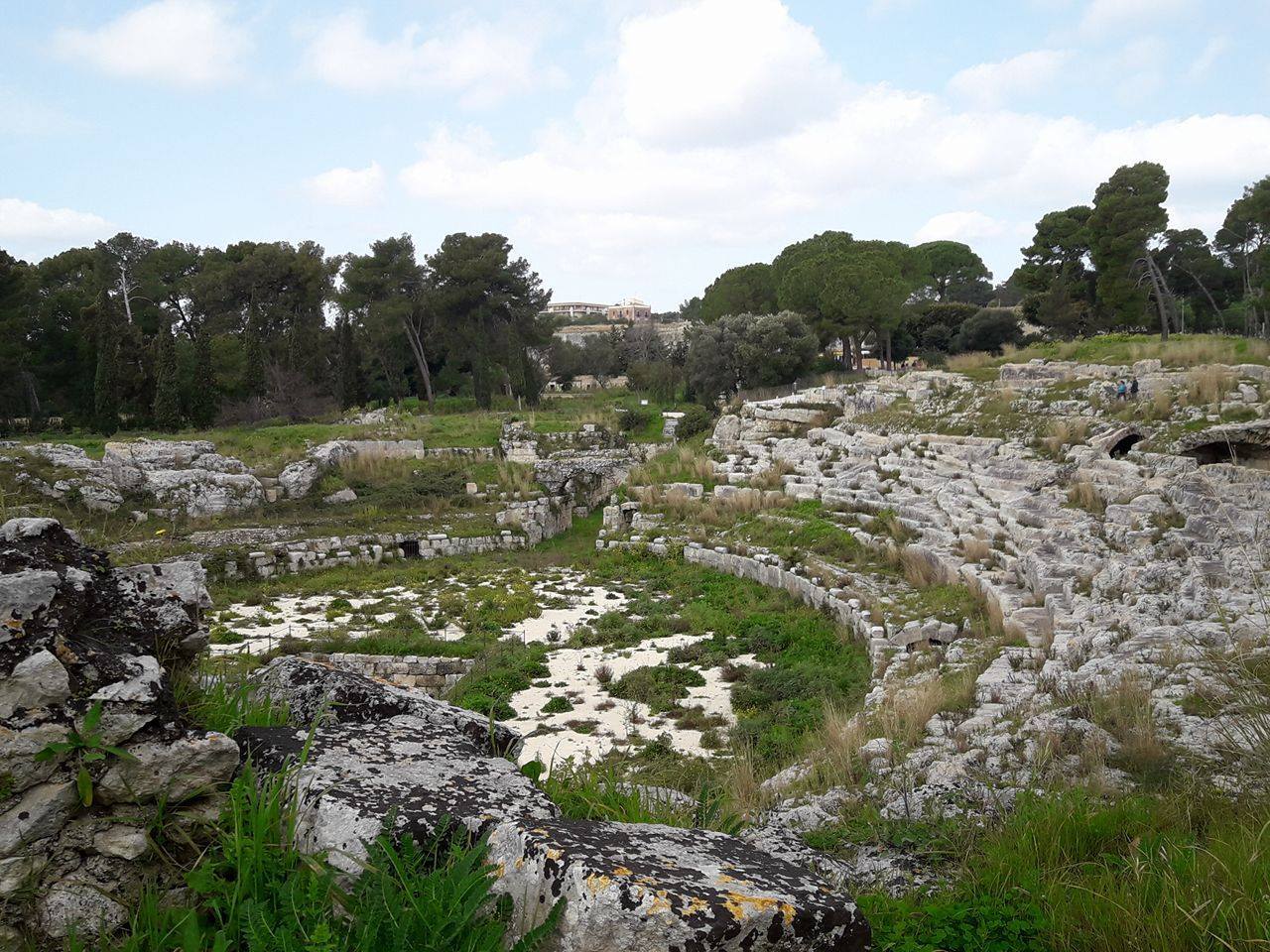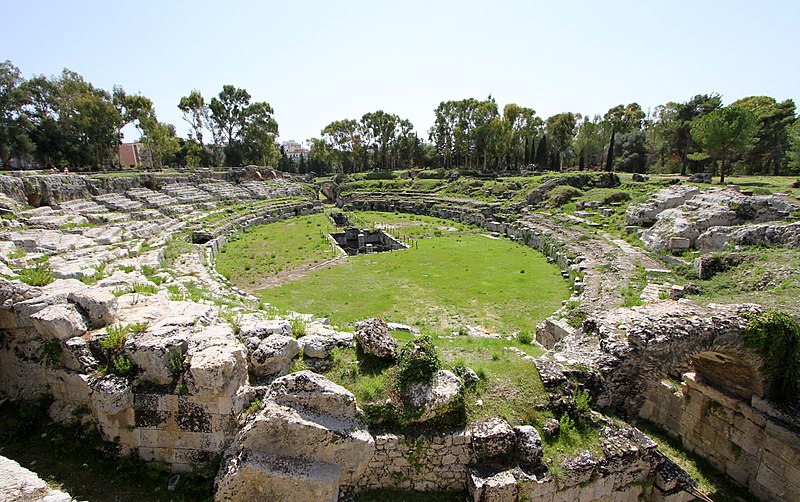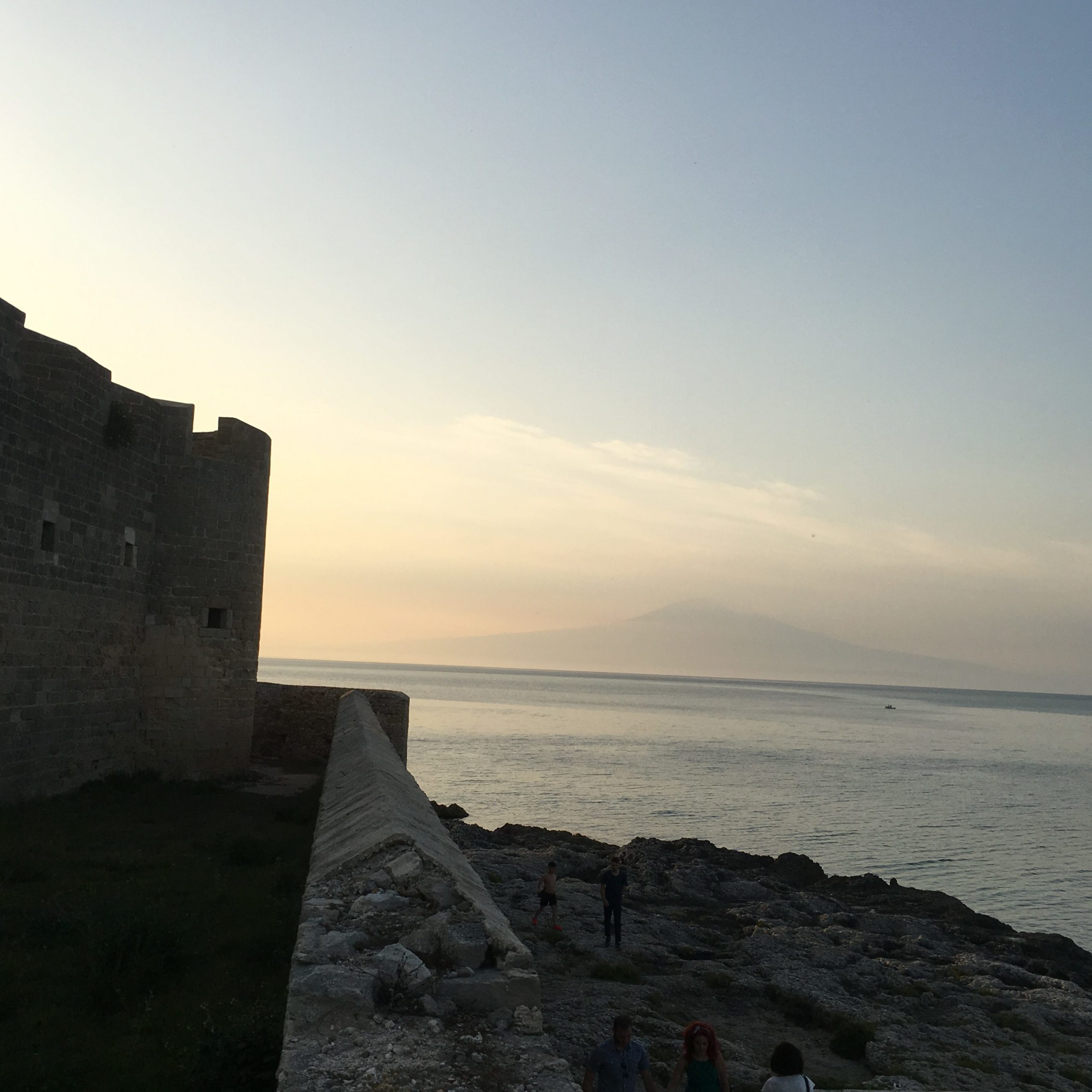Roman Amphitheatre
It was called the Golden Age, the era of Octavian Augustus, founder of the Roman Empire who had his influences felt especially in Sicily.
In Syracuse, during the settlement of a Roman colony in the Acradina district of the ancient Syracuse, for many years both Greek and Latin were spoken, but the Romanization took place in an unrelenting, albeit slow, way.
So the cult was also Romanized, in fact the existing monuments were modified, making them more in line with new needs.
New religious and civil buildings were erected.
The Roman Amphitheatre, perhaps begun under the reign of Nero (Roman emperor), was built between the second half of the second and fourth centuries AD, but for years it remained buried and was only brought to light in 1839 by the Duke of Serradifalco (a scholar, architect and scholar of Sicilian archaeology and architecture).
This Amphitheatre is only surpassed in size by the Colosseum of Rome.
(187.5×156.5 m), and is even larger than the Arena di Verona (152×123 m).
It measures 140×119 metres externally, while its internal dimensions are 70×40 metres, with an elliptical shape.
The cavea (steps for spectators) is dug in part into the rock of Colle Temenite (natural rock on which the entire Archaeological Park is based) and in part formed by blocks that were later used by the Spanish to fortify the city of Syracuse, in fact, the Spanish plundering of the sixteenth century have completely destroyed the raised part of this amphitheater.
The walls had a purple-red hue, still today, in some parts, some traces of red pigmentation are still visible.
Therefore, originally, the construction of the Amphitheatre was structured on 3 levels.
On the first level: the area nicknamed IBLA, where the high aristocracy took its place.
Second: the MEDIA, this area was reserved for the bourgeoisie.
At the third and last level: the SUMMA, here is where the people sat.
The Amphitheatre has a structure divided into sectors formed by stairs.
These steps were covered with marble slabs, to avoid deterioration of the rock on which they were dug.
At the center we can see a rectangular excavation, considered a sort of filling tank, the latter was used to quickly clean up the arena after the fights between gladiators (wrestlers of ancient Rome, mostly slaves) and beasts, and it is said that it was also used to be flooded during the shows of naval battles and then be drained.
The pool was connected to a water tank called “Roman Pool”, located under the church of St. Nicholas which is located at the entrance to the Archaeological Park, this tank, in turn, collected water from a spring near Scala Greca (now the northern entrance to the city).

Above the corridor, there are still blocks of balustrades (a protective element, which serves to prevent the fall) with names engraved, probably, of the characters for whom the seats were reserved.
Under the steps there is a corridor where several entrances to the arena are located but the main entrance was located in the south, on the current Viale Paolo Orsi.
However, it is possible that there was a sort of monumental entrance in the area in front of the southern entrance to the Amphitheatre, and that this “entrance” was the present Augustan Arch of Syracuse.
(Augustus refers to the historical-political-literary period that goes from the second half of the first century. BC to 14 AD and ends with the death of Augustus Octavian).
OPENING HOURS AND PRICES
Location: Viale Paradiso – Parco Archeologico della Neapolis
Contacts.: +39 0931 489511
Archaeological site without architectural barriers
First Sunday of each month free entry.
Entry ticket to the Archaeological Park: Adults € 10.00 – Reduced € 5.00 (under 18 years) – Free entrance up to the age of 12.
Combined ticket for the Archaeological Park + a museum of your choice between the Paolo Orsi Museum or the Palazzo Bellomo Gallery – Ticket price: € 13.50 – Reduced € 7.00 (under 18) – Free admission until the age of 12
Opening hours of the ticket office: from 8.30 am to 6.00 pm
PARK OPENING HOURS: from 8.30 a.m. to 6.30 p.m.
From May 10 to July 18 the schedule may vary, on the occasion of the Greek tragedies that will be performed at the Greek theater.


